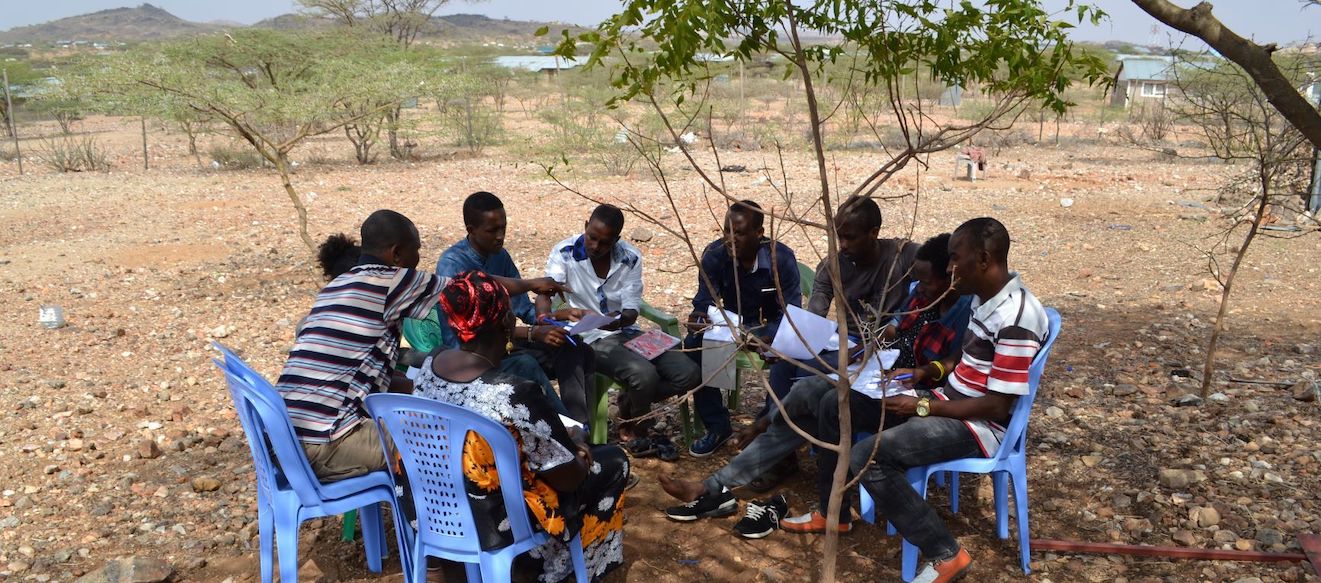Citizens and Non-State Actors' role in Public Expenditure Management and Tracking. A case study of Marsabit County
By Gladys Gatiba on 28th November 2018 | Project Update 0 0
"Building the capacity of citizens and NSAs in Public Expenditure Management(PEM) and the use of Public Expenditure Tracking Survey (PETS) tools empowers them with the necessary information and tools for effective public participation which will contribute to better service delivery in Marsabit County"
Public Expenditure Tracking Surveys (PETS) is a diagnostic tool used to study the flow of resources through the system under which data are collected at all involved administrative levels and at the frontline provider. PETS track the flow of resources through various levels of government to determine how much of the originally allocated public resources reach each level. The PETS enable us to observe the outputs and actions of service providers, hence providing new information to policy-makers and beneficiaries on the complex transformation of public budgets into services. The constitution of Kenya (CoK) 2010 profoundly encourages transparency and accountability in governance with emphasis on bottom-up approach and bestowing immense powers on the citizens on holding duty bearers accountable. Devolution particularly embodies the CoK 2010ís bottom-up approach transformation of governance in Kenya. Through devolution, several milestones have been realized and lives transformed especially in the marginalized regions like Northern parts of Kenya. Despite notable devolution milestones, corruption remains one of the greatest threats towards realization of the promise of devolution (TI-kenya;2014 & 2015). Public expenditure tracking survey (PETS) are very key tools that citizens can use in performing their oversight function for efficient and effective service delivery.

TOTs carrying out training on citizens
Green Africa Foundation develops a PETS tool and pilots it in Environment, water and natural resources and Agriculture, fisheries and livestock sectors of Marsabit county
In a participatory process, Green Africa Foundation worked with over 250 community members in Marsabit county to develop and pilot a public expenditure tracking survey tool. The process entailed training of TOTs on Public Expenditure Management (PEM) and how to access information from the national and county government. The PETS tool was introduced and tested by the Trainers of Trainees (TOTs) to ensure it is as simple as possible for community members to use and that it also captures adequate community feedback that can be useful to service providers and the County government. After the training, the TOTs mobilized community members and trained them on PEM and mentored them on the use of PETS in five selected wards. They also sensitized the community on their responsibilities and rights in Public participation. Community members were formed into community tracking groups. Using the PETS tool, the group members tracked projects located in their respective Manyatta villages. The pilot PETs surveys/tracking were carried out in Laisamis, Korr, Loglogo, Karare and Marsabit central wards. Green Africa Foundation printed each ward budget on the Environment, water and natural resources sector for citizen use during the pilot tracking exercise. Interestingly, it was the first time majority of the community members had a chance to look at the Marsabit County budget. A few indicated involvements in the initial planning meetings to discuss community priorities, however there was no follow up to inform them on the allocated budget, shortlisted service providers and any other changes thereof in the highlighted priorities.
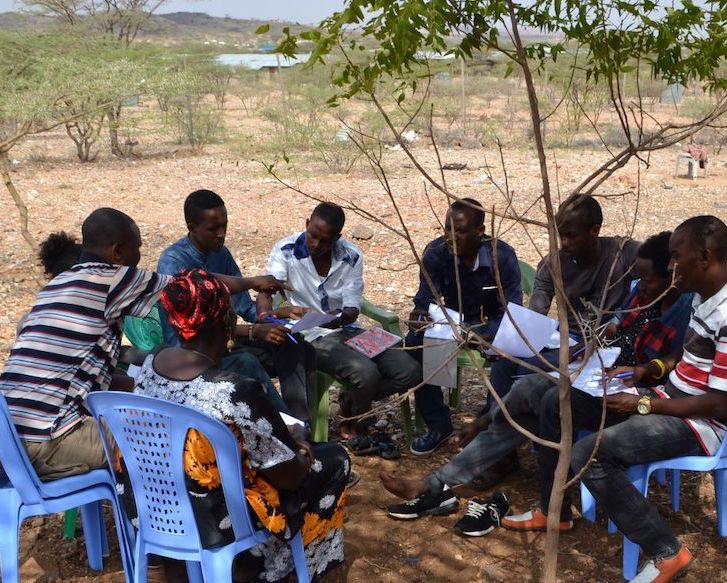
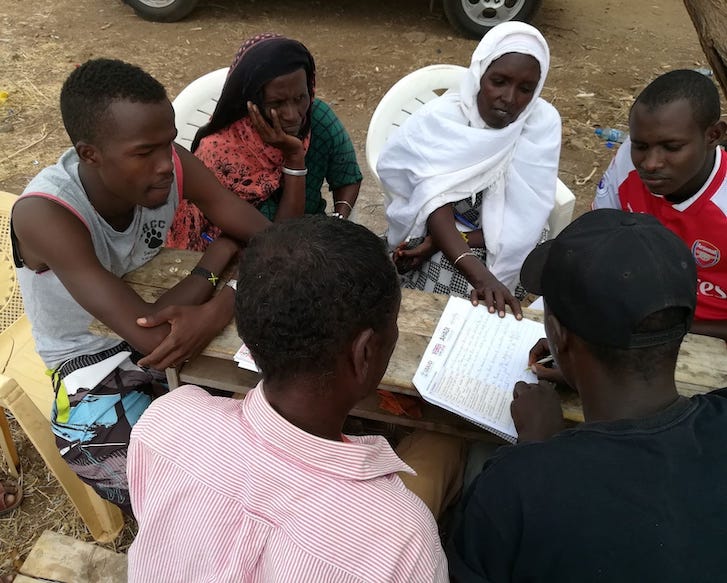
Community members tracking projects in Laisamis ward
CHALLENGES AFFECTING COMMUNITY PARTICIPATION IN PUBLIC EXPENDITURE MANAGEMENT
- Lack of timely engagement of citizens
- Inadequate information on PEM processes
- Challenges in accessing information from the county government
- Inexistence of community planning structures
- Political influence and interference
- Underutilization of indigenous knowledge
- Inappropriate motivation of citizens
The county government just like the national government has a planning cycle or calendar of events that stipulates the dates or deadlines when they should accomplish for example budget planning. The community feedback indicated that County governments does not provide timely information on planned public participation activities to allow adequate citizen mobilization. Ward representatives are given a short notice to mobilize people which results to sidelining communities living in villages that are in remote areas. As a results, their development priorities are not addressed.
Community members indicated lack of civic education that would enhance effective and meaningful public participation. Engagement should be ongoing not only when there is need for community feedback on the already set priorities.
Majority indicated unsuccessful efforts to get information about ongoing projects in their communities. This has even affected donor investments in some projects that in some cases need historical documentation held by the county departments e.g. water projects that need rehabilitation.
In all the five wards Green Africa Foundation visited, Karare ward was the only one with a ward development committee. Community members in Laisamis, Loglogo, Korr and Marsabit central lack a ward development committee. As a result, only few selected members of the community have been taking part in county development planning. This means only few people set the priorities for the community.
On the other hand, the community members from Karare indicated a remarkable improvement in service delivery in their ward due to the active participation of the ward development committee in County planning process. The committee has been involved in the selection of contractors whom they have kept accountable to delivery their work within the stipulated time and quality.
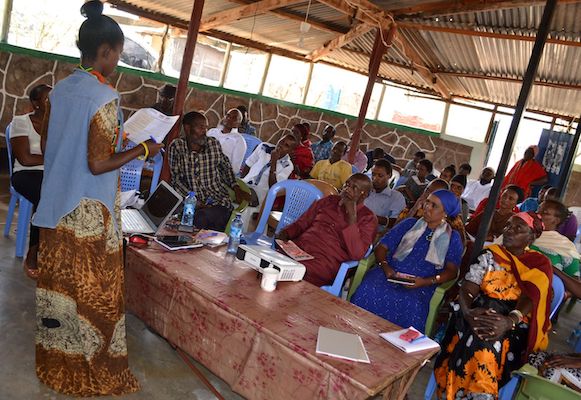
Feedback presentation by community members after a tracking exercise.
The community indicated disputes due to political alignments and influence during planning and implementation of community projects. This limits public participation due to fear of harassment and violence.
The elders in the community are a hub of indigenous knowledge which could have huge impact of project sustainability if well utilized. They indicated its importance in e.g. determining project sites based on rainy seasons, livestock walking routes and feeding patterns among others. In most cases in project planning, the contractor conducts limited or no consultation rendering some projects useless after a short period of time.
The community has a responsibility over community development through public participation. However, some community members are driven by the availability of Incentives for participation. County government and other development partners do not offer any incentives for participation which in some cases result to unequal representation during public participation.
CHALLENGES EXPERIENCED DURING PILOTING OF THE PETS TOOL
- Little understanding of County government project objectives
- Inconsistent coding and language between the sector budgets and implementation report
- Inadequate information on implementation status of projects from supplementary budgets
- Lack of access to the livestock budget
There were places where a project was meant to be a rehabilitation project of the main water pipes without extending to pipes that direct water to homes. Or situations where resources are allocated to maintenance of a borehole that is used during the dry season. Such situations made citizens dispute the completeness and importance of such a project respectively.
The budget line items description in some cases would vary from the description in the implementation report. This would cause confusion amongst the community members in the tracking groups hence a questioning the actual project plan.
There were funds that had been allocated to given project that were reallocated to another project. This was indicated in the budget but was lacking in the implementation report to indicate the resources use on the new project. It posed a challenge in tracking such resources as the community also indicated none existence of the new/reallocated project.
Despite Green Africa Foundation efforts to access the Livestock budget and implementation report from the host department for community use during tracking, we only managed to access the budget. This affected tracking livestock projects as the community was keen to find out the actual amount of money that was used irrespective of their knowledge of the project sites.
RECOMMENDATIONS
- There is need for civic education on citizen rights and responsibilities in the PEM process
- There is need for consistency and proper budget coding in both recurrent and development expenditure that would make it easy for citizen engagement.
- Community members should be encouraged to form ward development committee. Capacity building on their role and effective participation in county planning process should be carried out.
- Community members need to be engaged throughout the PEM process not just at identifying priority projects and project commissioning.
- There is need for continuous capacity building of county officials (especially the new ones) on both their role in supporting citizen participation in public expenditure management.
CONCLUSION
Citizen and Non State Actor engagement in public expenditure management has a potential to improve service delivery at the County level. Community members have the opportunity to suggest suitable and urgent project needed. Once actively involved in the design, selection of contractors, project implementation, monitoring and evaluation, the have project ownership which increases its sustainability. The community may protect such a project from vandalism and may mobilize resources for repair in cases of breakdown. Using Public Expenditure Tracking Survey (PETS) tools, communities have an opportunity to track the flow of county resources and identify the fiscal discipline, allocative efficiency, and operational efficiency of their County governments. The feedback collected using this tools is useful in improving accountability on public resources. Importantly, it can also be used by the county officials in improving service delivery of the assigned contractors. County can integrate the use of PETS in their work in an effort to increase community participation in county development and to also have project beneficiary as auditors hence timely and quality projects.
PETs have the potential to aid the delivery of the devolved system of government that is characterized by active citizen engagement.
The community feedback collected during this PETS tool pilot will be presented to the county government officer during joint meeting with community members and other stakeholders in Marsabit County.
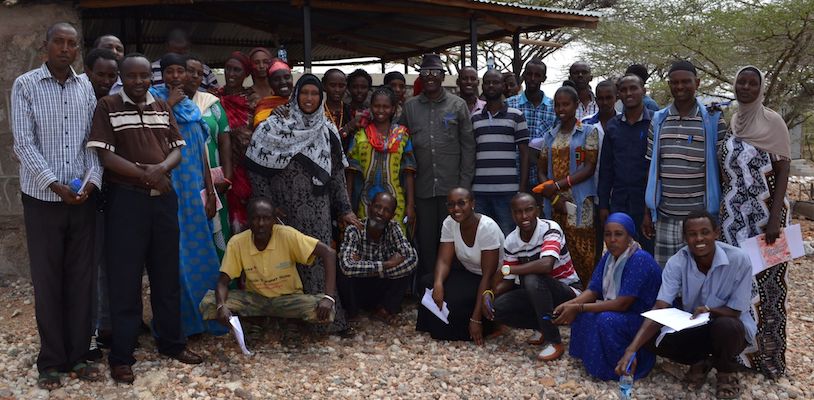
Community members during piloting of the PETS tool in Korr ward
Gladys N. Gatiba
